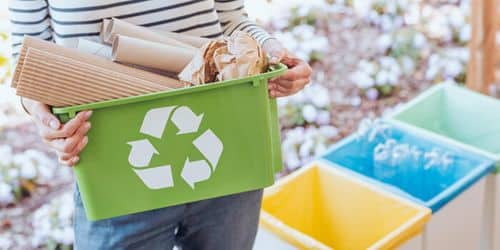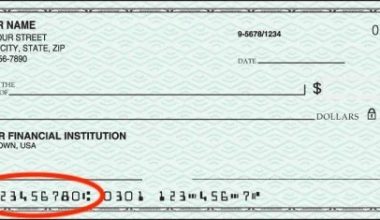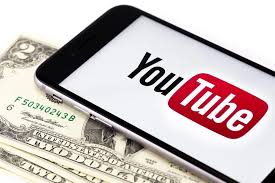By separating economic activity from the exploitation of limited resources, the circular economy addresses issues like climate change, waste, and pollution as well as other global problems like biodiversity loss. In a circular economy, instead of throwing away resources, individuals recycle and reuse them. This model has several benefits for both individuals and businesses while reducing its negative effects on the environment. We can create a more sustainable future by using the effective tool of a circular economy. Inequality in the economy, resource depletion, and climate change are just a few of the urgent issues that this model may help to resolve.
Circular Economy
The “circular economy,” a mode of production and consumption, places a focus on extending the life of used goods through sharing, renting, reusing, repairing, and recycling. As a result, this extends the products’ life cycles.
In actuality, it refers to minimizing waste. Recycling enables you to keep as many of a product’s components in your community’s economy as you can after it has served its purpose. These adds more value by productively applying repeatedly.
A circular economy is a way of producing and consuming goods that prioritize reusing goods over throwing them away. A circular economy is simply a fancy way of saying used goods if one is to be cynical.
A sustainable economic model known as the “circular economy” emphasizes material reuse and recycling to conserve natural resources and prevent the production of waste.
Therefore, the circular economy seeks to maximize the use of the material resources at our disposal by putting three fundamental principles into practice: reduce, reuse, and recycle. This extends the lifespan of products, makes use of waste, and gradually establishes a more effective and sustainable production model. The concept is inspired by nature, where everything has a purpose and is put to use, and where waste changes into fresh resources. There is healthy balance between progress and sustainability.
In general, the circular economy concept supports and promotes the 3-R approach—reduce, reuse, and recycle. This strategy promotes human health as well as the improvement of the environment.
In the big picture, this idea seeks to reduce carbon emissions through afforestation campaigns or other means. Furthermore, an economy of this kind is closely related to the idea of zero waste. The circular economy is crucial because it supports sustainable growth. It promotes the use of waste as an ingredient in the creation of new finished goods. It encourages the development of raw material reserves and the use of novel techniques to do away with any steps that increase the price and speed of producing new goods.
Pillars of the Circular Economy
To move toward a just society, we must consider environmental, economic, and social issues. This sustainable model therefore depends on seven pillars that address every stage of the life cycle of the good or service.
#1. Sustainable Procurement
This entails considering the negative effects that resource extraction and exploitation have on the environment and society. The goal is to reduce emissions of waste and greenhouse gases. In this regard, it is advisable to favor sustainable resources by favoring suppliers who adhere to ethical and environmental standards, as well as the overall circular model.
#2. Ecodesign
Ecodesign considers a product or service’s entire life cycle, from resource extraction to end-of-life, to foresee and reduce any negative environmental effects. For instance, it entails cutting back on plastic packaging, transportation, the use of rare earth metals, limited resource use, promoting resource efficiency, combating planned obsolescence, or enhancing repairability and recyclability.
#3. Industrial and Territorial Ecology (EIT)
This third pillar involves establishing connections between various economic players to maximize the use of resources, such as water, energy, materials, waste, equipment, or expertise, in a specific area. A systems-based approach and resource sharing make this possible. To put it another way, the waste of one business may be a resource for another.
#4. Service Economy
This economic theory favors utilization over ownership. It requires selling services relating to the product rather than just the product itself to achieve this. As a result, the service economy enables the creation of jobs, the encouragement of interdependence among people, and the extension of product life without using up additional material resources or energy. The service economy is the foundation for initiatives like self-service bicycles and carpooling services.
#5. Responsible Consumption
Each consumer, whether an individual or a member of the public or private economy, must consider the environmental and social effects of a product at every stage of its life when making a purchase. This entails encouraging sustainable products through thoughtful and environmentally responsible consumption.
#6. Extending the Life of Products
To achieve this, the consumer must favor fixing or giving outdated or damaged items a second chance through reuse, vintage resale, or charitable donations. It is a good way to save money in addition to being environmentally friendly and supporting circular business models!
#7. Recycling
Reusing existing raw materials to create new goods through recycling is a last resort. The intention behind waste recovery is to prevent the damaging extraction of new raw materials. The recycling of resources enables sustainable supply, which is the first pillar, closing the loop of this beneficial system.
Benefits of Circular Economy
#1. Protect the Environment
Use natural resources will reduce through the reuse and recycling of products, which would also lessen the disruption of landscapes and habitats and contribute to the preservation of biodiversity. The circular economy also results in a decrease in the total amount of greenhouse gas emissions each year. It would be easier to use less energy and resources if manufacturing companies design products from the beginning to be more efficient and sustainable. Reusing, upgrading, and repairing more durable goods would decrease the amount of waste. To combat excessive packaging, it is advisable to enhance packaging design to encourage recycling and reuse.
#2. Reduce Reliance on Raw Materials
The demand for raw materials is rising as the world’s population does. The availability of necessary raw materials is constrained though. Recycling raw materials reduces supply-related risks like price sensitivity, supply constraints, and import dependence.
This is particularly true of essential raw materials used to create climate-critical technologies like batteries and electric engines.
#3. Helps Producers Save More Money on Materials
In a linear economy, manufacturers must constantly find new materials to produce goods, and waste is frequently a disposable expense. In this system, businesses frequently consider waste to be a disposal expense.
The circular economy, on the other hand, encourages businesses to view waste as a valuable resource that they can use to develop new goods. Consequently, producers spend less on raw materials and disposal fees.
Because they can source recycled materials rather than virgin ones, producers in the circular economy are also less likely to experience changes in the price of raw materials. Consequently, they are better able to compete in international markets and are more resilient to economic downturns. According to research by the Ellen MacArthur Foundation, if we transition to a circular economy by 2030, material costs could be cut by up to 50%.
#4. Customers Get Safer Products
Traditionally, manufacturers have added toxic chemicals and poisons to their goods to reduce the cost and simplify production. But these substances might pollute the environment if they seep into the ground. Additionally, they may find their way into our food supply and water supply, which could harm those who consume it. Utilizing recycled materials that have been cleaned and refined is more common among producers in the circular economy. Additionally, they are rewarded for using natural and organic materials that are safe for the environment and our health. Our world becomes safer as a result, which is good.
#5. Employment and Cost Savings for Consumers
Innovation in various economic sectors would be boosted by redesigning materials and products for circular use. The development of new jobs across several sectors, including manufacturing, engineering, design, and recycling, contributes to economic growth.
Customers will have access to more durable and cutting-edge products, enhancing their quality of life and long-term financial savings.
#6. Reduces Greenhouse Emissions
The linear economy significantly harms the environment. This system always results in waste being dumped in landfills, where it decomposes and emits greenhouse gases into the atmosphere.
A circular economy can aid in lowering greenhouse gas emissions, which will lessen the impact of climate change.
According to the Ellen MacArthur Foundation, implementing a circular economy could cut greenhouse gas emissions by 7.4 million tonnes annually and cut carbon dioxide emissions in half by 2030. This would be a big step in the right direction for combating climate change and preserving the planet for future generations.
#7. Reduces the Use of Raw Materials
A circular economy reduces the number of primary resources used, such as those for building and building materials, synthetic fertilizers, real estate land, and so forth. This is so that products made under the circular economy can last longer and be recycled or reused instead of ending up in landfills.
A circular economy transition could result in a 32% decrease in the consumption of primary materials, according to the Ellen MacArthur Foundation. This would significantly lessen the amount of mining and drilling required to extract these materials, which would have a positive effect on the environment.
#8. Conserves Soil Health and Productivity
The earth’s resources are depleted by the linear economy, making it unsustainable over time. Annual costs for land degradation are estimated at 10.6 trillion.
Contrarily, by using recycled materials and reducing waste, a circular economy contributes to the preservation of land productivity and soil health.
#9. Stimulates Economic Growth
Gross Domestic Product (GDP), which represents the total cost of all goods and services produced in a nation, is a key indicator of economic growth. Since it encourages businesses to create products that can be recycled or reused, a circular economy can aid in increasing GDP.
A shift to a circular economy, according to the Ellen MacArthur Foundation, could boost GDP by as much as USD 700 billion by 2030.
This would be advantageous for economies all over the world, lowering poverty and raising living standards.
#10. Higher Levels of Competition
There is a reduction in the price of supplies and costs associated with waste treatment. Recycling and the lack of transportation allow for resource reuse, which saves the business money on raw materials. This promotes competition, lowers production costs, and accelerates the shift to a circular economy.
#11. Raises Brand Awareness
Responding to current environmental problems and consumer concerns is made possible by using a circular strategy. Promoting one’s environmental commitments and upholding them is a great way to increase brand recognition and customer loyalty.
Sustainable Circular Economy
The circular economy aims to increase the useful life of materials through reuse, remanufacturing, and recycling in addition to producing goods that are as robust as possible. The circular economy emphasizes three principles throughout the product lifecycle to address climate change, biodiversity loss, e-waste, and pollution.
- Reduction of pollution and waste. This principle promotes reducing waste and pollution through economic activity, specifically by purchasing new rather than used goods.
- Increased product and material usefulness. This is a crucial idea for IT. Active reuse, repair, and remanufacturing of the products and resources used in the economy are used to achieve the goal.
- Regenerating nature’s systems. A circular economy’s core ideas include the regeneration of natural systems. In addition to enhancing natural capital, it also establishes the prerequisites for the renewal of natural systems.
Why It’s Important
Utilizing resources effectively is made easier by the circular economy, which also lessens the burden of a shortage of raw materials. As a result, there is less mining and resource development, which lessens the impact on the environment.
The circular economy has advantages for the environment in that it uses fewer natural resources, uses less energy, and produces less waste. This conserves natural resources and lowers carbon emissions.
Despite all of its advantages, the circular economy is not a panacea. Even though they sometimes do not involve the IT side of things, there are drawbacks to it. Businesses might not be able to afford the price of installing this system. Furthermore, determining what constitutes waste and how much is generated can be arbitrary. But not all materials can be recycled or used again.
Circular Economy Model
At a macro or governmental level, a circular economy model aims to address significant issues like global warming by developing products, services, and regulations that support reuse, renovation, leasing, and sharing. Businesses must be involved to have a national or even global impact on such a delicate phenomenon by being given incentives and subsidies. It promotes recycling and resource restoration. Additionally, it tends to produce more finished goods and encourages the recycling of waste as a resource.
Businesses have the chance to increase their level of innovation, competitiveness, and employment while also adding value for their clients. Most businesses that adopt circular economy models outperform conventional ones in a world where more and more customers base their purchasing decisions on how a product is made, packaged, transported, consumed, and disposed of.
Businesses that operate in a circular economy use little to no virgin raw materials, have fully recyclable inputs, and recycle waste into materials that can be repurposed further up the value chain, creating new sources of income.
What Is Circular Economy With Example?
Manufacturers create products intending to be reused in a circular economy. Electrical devices, for instance, have designs that make repairs simpler. Additionally, raw materials and finished goods are recycled when practical. As an illustration, turning recycled plastic waste into pellets for new plastic product manufacturing
What Are the 5 R’s of Circular Economy?
The five R’s are as follows: refuse, reduce, reuse, repurpose, and recycle.
- Refuse everything you do not need. Avoiding the entry of waste into your home is the first step toward living a zero-waste lifestyle.
- Reduce the amount you do need. A clear understanding of your needs and consideration for your purchasing decisions are necessary for reducing what you do not need. It means letting go of household items that are no longer needed and refraining from making impulsive purchases.
- Reuse can lengthen a product’s useful life. Reusing entails fixing rather than throwing away and replacing products, as well as replacing temporary solutions for single-use items.
- Recycle what you cannot refuse, reduce or reuse
- Repurposing, also known as upcycling, is the process of reusing an old item that you no longer require.
Is Circular Economy Realistic?
An economically viable system would use the circular economy. Because when properly implemented, it addresses urgent problems on a variety of levels—economic, social, and environmental.
What Are the 3 Principles of Circular Economy?
It is founded on three design-driven tenets: eradicating waste and pollution, distributing goods and resources at their highest value, and regenerating the natural world. is a robust system that benefits society, the economy, and the environment.
Why Is a Circular Economy Not Possible?
The issue is that the current political, social, and economic systems favor linear models of production and consumption, making it difficult to implement circular systems. Additionally, a significant change in how products are created, used, and disposed of is necessary to implement the circular economy.
What Is the Difference Between Recycling and Circular Economy?
Since most materials can only be recycled a limited number of times before losing their quality and becoming useless, the recycling economy is different from the circular economy. The goal of a circular economy is to keep goods and resources in use without lowering their quality or downcycling them into less expensive goods.
What Is the Difference Between Circular Economy and Sustainability?
Although not all sustainability initiatives promote circularity, doing so does make the world more sustainable. Unlike sustainability, which has a broader focus on people, the environment, and the economy, circularity emphasizes resource cycles.
Conclusion
Resources are used as long as possible in the circular economy, their value is maximized, and when products and the components that make them up are no longer useful, resources are recovered, renewed, and reused. The linear take-make-waste economic model is replaced by a closed-loop model in the circular economy, which lowers waste, emissions, and pollution. The EU claims that circular product design and manufacturing processes can help reduce the use of resources like water, metals, and other raw materials, prevent the creation of waste that cannot be effectively managed, and create new business opportunities and jobs.
Related Articles
- Green Business: 5 Ways Sustainable Business Practices Are Driving Social Change
- TOP BUSINESS TRENDS TO LOOK OUT FOR IN 2023-2024
- Green Cleaning and Its Advantages for Commercial Spaces
- VERTICAL FARMING: What It Is & All You Should Know
- ECONOMIC SYSTEM. Types Of Economic System Of The U.S






